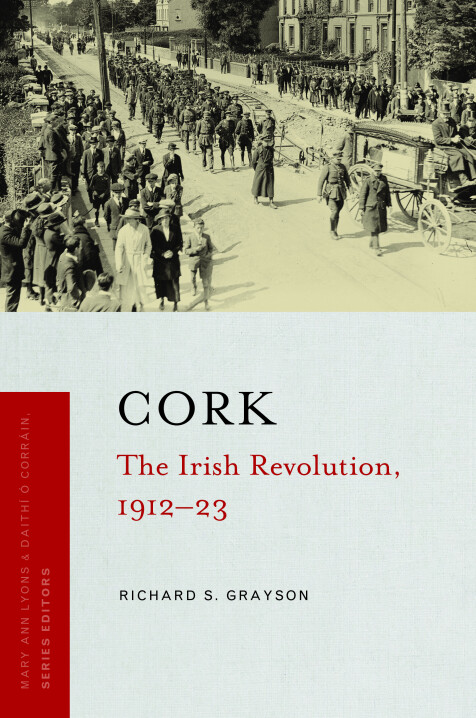Cork
The Irish Revolution, 1912-23
Richard S. Grayson
Events in the ‘Rebel County’ of Cork have played a central role in popular memory and historiography of the Irish Revolution. The county contributes some of the most prominent aspects of the Revolution’s central narrative: the figure of Clonakilty’s Michael Collins and his death at Béal na Bláth; the murder of Tomás Mac Curtain; the hunger strike and death of Terence MacSwiney; and the actions of Tom Barry’s West Cork ‘Flying Column’.
This book takes a new approach to understanding conflict in Cork through analysis of patterns of death, spatially and chronologically, during the conflicts of 1912–23. It also analyses in new ways the scale and nature of the Cork IRA’s operations during the War of Independence, and both IRA and National Army activities during the Civil War. In so doing, it suggests that some past work has been overly focused on violence in West Cork, especially a few specific incidents. It argues that, overall, West Cork was no more violent than the rest of the county; indeed, the bulk of deaths and operations took place in the area covered by the IRA’s Cork 1 Brigade centred on Cork City.
At the same time, the story of the First World War is woven into that of the Irish Revolution, showing how the two informed each other. Cork had two strands of parliamentary nationalism (particularly William O’Brien’s All-for-Ireland League but also the Irish Parliamentary Party), both of which supported the British war effort in different ways, ultimately leading to their replacement by Sinn Féin in 1918.
Professor Richard S. Grayson is Head of the School of Education, Humanities and Languages at Oxford Brookes University, and has published extensively on Ireland’s 1912-23 period.


